Photos and letters from the archives show how James Watson and Francis Crick raced to uncover the double helix structure of DNA.

 Science Photo Library
Science Photo Library
DNA is the molecule that contains the hereditary information for cells. The legendary race to uncover its structure began when American biologist James Watson (right) arrived at the University of Cambridge. Here he met Francis Crick (left), an English physicist. In 1951, the two began building scale models to test their ideas at the Cavendish laboratory.

 Churchill Archive Centre
Churchill Archive Centre
At the same time, two scientists at King’s College London - Maurice Wilkins and Rosalind Franklin - were also studying DNA. They were trying to crystallise the molecule to make an x-ray pattern of it. They hoped this would provide important clues about its mysterious structure.

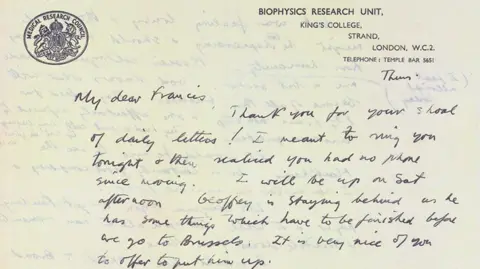 Wellcome Library
Wellcome Library
The two teams competed against each other to discover the secrets of DNA. Yet they remained on friendly terms throughout. Francis Crick (Cambridge) and Maurice Wilkins (London) wrote to each other regularly. The letters reveal their close personal relationship

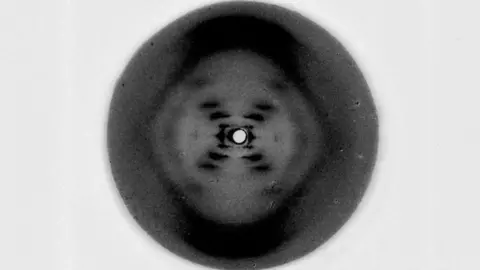 King's College London
King's College London
Rosalind Franklin's work with x-rays was critical to the eventual discovery of the structure of DNA. In 1952, her King's College team took this famous image, known as 'Photo 51'. It appears to show rungs’, like those on a ladder, set between two strands. The fuzzy “X” pattern was a big clue to DNA's helix-like shape. A year later, Maurice Wilkins showed James Watson the image, seemingly without Franklin’s knowledge.

 Science Photo Library
Science Photo Library
Was Rosalind Franklin cheated of the glory of being the first to find the structure of DNA? This is one of the mostly hotly debated arguments in the history of science. She was sure that some DNA had a helical shape but was not ready to reveal her findings until she was convinced that all of it did. James Watson and Francis Crick found her work hugely important but they admitted they adopted a 'patronising attitude' towards her personally.

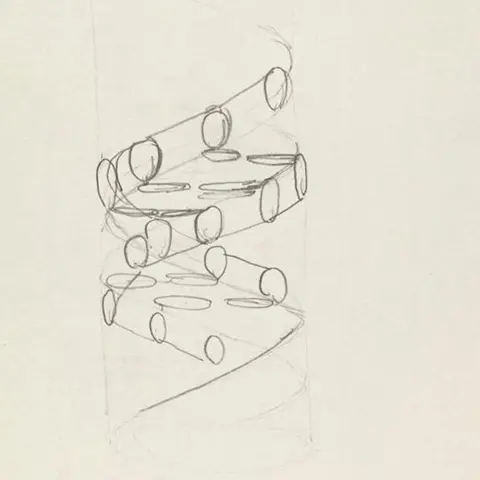 Wellcome Library
Wellcome Library
James Watson and Francis Crick's approach was to build models of possible structures and test them against the best scientific research. Their crucial conceptual step was to suggest that the molecule was made of two chains of nucleotides, each in a helix as Franklin had found, but one going up and the other going down. Francis Crick produced this sketch of a double helix structure for DNA.

 Wellcome Library
Wellcome Library
In March 1953, Watson and Crick wrote a rough draft of 'A Structure for DNA’ to submit to the journal ‘Nature’. An American biochemist, Linus Pauling, submitted an alternative model for DNA's structure a few months before the Cambridge scientists published their paper. However, Pauling's theory was wrong.

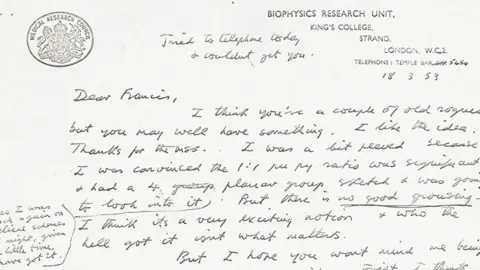 Wellcome Library
Wellcome Library
"I think you're a couple of old rogues but you may well have something.." Maurice Wilkins magnanimously congratulated Watson and Crick having been sent the rough draft of their Nature paper. Wilkins admits to being ‘a bit peeved’ to be beaten to the discovery, but remarked "who the hell got it isn't what matters".

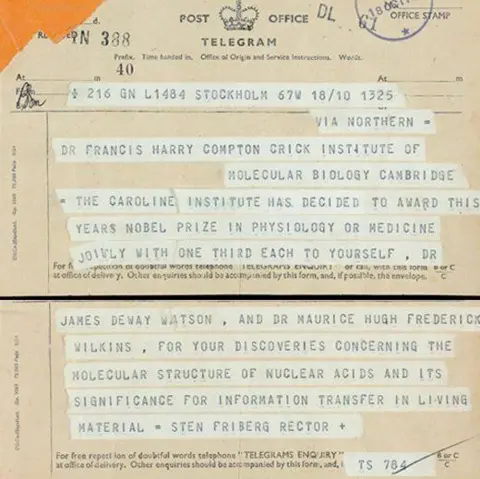 Wellcome Library
Wellcome Library
James Watson, Francis Crick and Maurice Wilkins received the Nobel Prize for Medicine" in 1962 for their discoveries concerning the "molecular structure of nucleic acids and their significance for information transfer in living material". Rosalind Franklin had since died of cancer and was not able to share the prize. She was only 37 years of age.

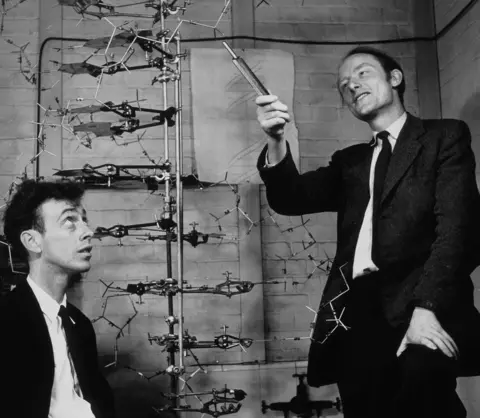 Science Photo Library
Science Photo Library
James Watson (left) and Francis Crick's work on DNA has been described as the most important biological discovery of the last century. It opened new frontiers in science critical to human advancement over the next 100 years. Minor changes to the original Watson and Crick double helix model have been made since its discovery in 1953 but this central insight remains scientific orthodoxy to this day.
.png)




